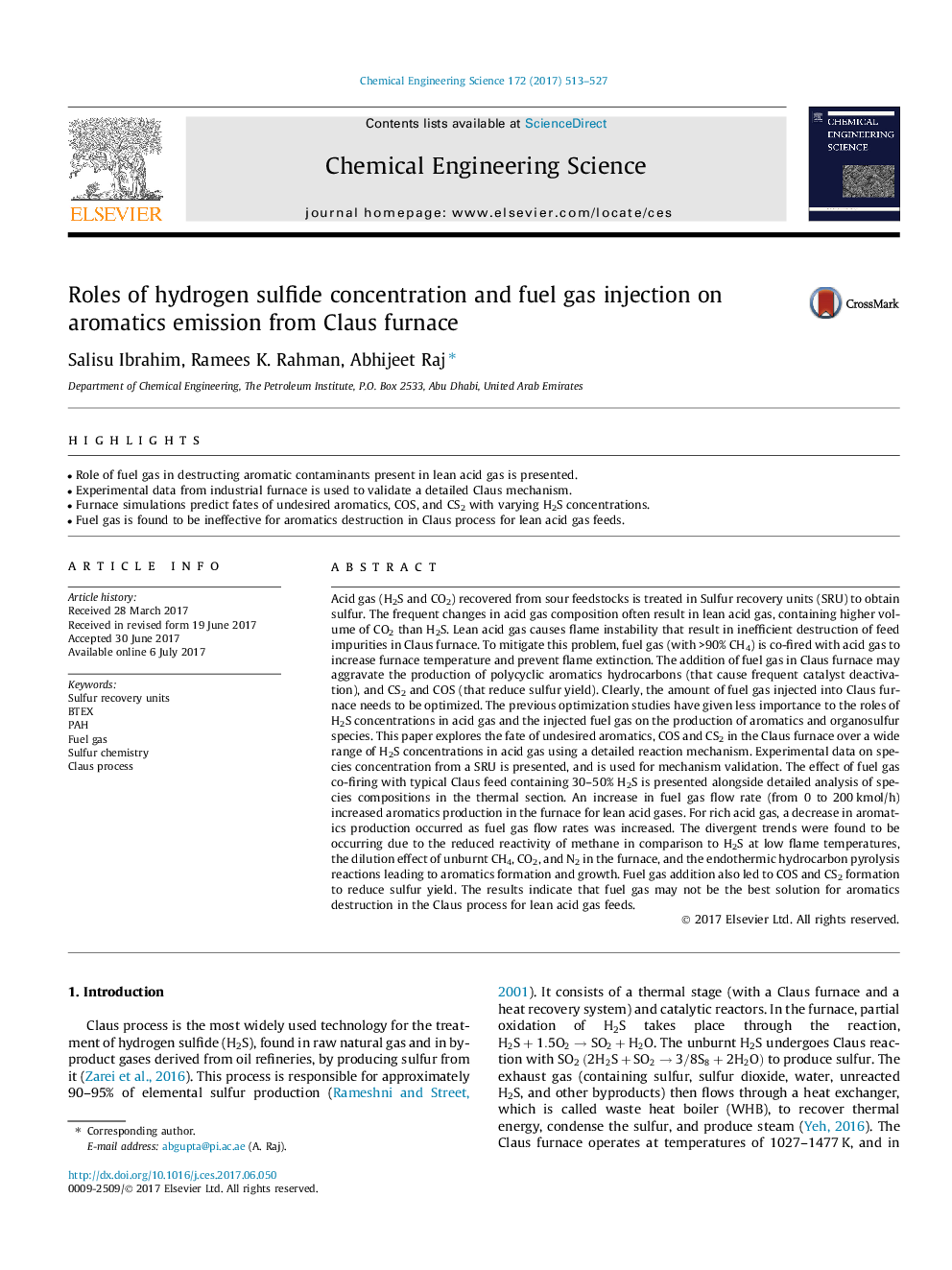| کد مقاله | کد نشریه | سال انتشار | مقاله انگلیسی | نسخه تمام متن |
|---|---|---|---|---|
| 6466980 | 1423247 | 2017 | 15 صفحه PDF | دانلود رایگان |
- Role of fuel gas in destructing aromatic contaminants present in lean acid gas is presented.
- Experimental data from industrial furnace is used to validate a detailed Claus mechanism.
- Furnace simulations predict fates of undesired aromatics, COS, and CS2 with varying H2S concentrations.
- Fuel gas is found to be ineffective for aromatics destruction in Claus process for lean acid gas feeds.
Acid gas (H2S and CO2) recovered from sour feedstocks is treated in Sulfur recovery units (SRU) to obtain sulfur. The frequent changes in acid gas composition often result in lean acid gas, containing higher volume of CO2 than H2S. Lean acid gas causes flame instability that result in inefficient destruction of feed impurities in Claus furnace. To mitigate this problem, fuel gas (with >90% CH4) is co-fired with acid gas to increase furnace temperature and prevent flame extinction. The addition of fuel gas in Claus furnace may aggravate the production of polycyclic aromatics hydrocarbons (that cause frequent catalyst deactivation), and CS2 and COS (that reduce sulfur yield). Clearly, the amount of fuel gas injected into Claus furnace needs to be optimized. The previous optimization studies have given less importance to the roles of H2S concentrations in acid gas and the injected fuel gas on the production of aromatics and organosulfur species. This paper explores the fate of undesired aromatics, COS and CS2 in the Claus furnace over a wide range of H2S concentrations in acid gas using a detailed reaction mechanism. Experimental data on species concentration from a SRU is presented, and is used for mechanism validation. The effect of fuel gas co-firing with typical Claus feed containing 30-50% H2S is presented alongside detailed analysis of species compositions in the thermal section. An increase in fuel gas flow rate (from 0 to 200Â kmol/h) increased aromatics production in the furnace for lean acid gases. For rich acid gas, a decrease in aromatics production occurred as fuel gas flow rates was increased. The divergent trends were found to be occurring due to the reduced reactivity of methane in comparison to H2S at low flame temperatures, the dilution effect of unburnt CH4, CO2, and N2 in the furnace, and the endothermic hydrocarbon pyrolysis reactions leading to aromatics formation and growth. Fuel gas addition also led to COS and CS2 formation to reduce sulfur yield. The results indicate that fuel gas may not be the best solution for aromatics destruction in the Claus process for lean acid gas feeds.
Journal: Chemical Engineering Science - Volume 172, 23 November 2017, Pages 513-527
